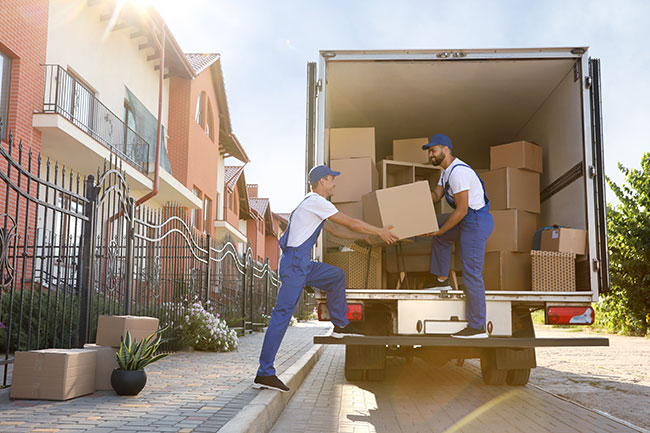
Moving across state lines is a major life event that can be both thrilling and overwhelming. Packing up your entire life and transporting it hundreds of miles is no small feat. With so many moving parts – literally and figuratively – it’s easy to feel stressed and unsure of where to start. But don’t worry; you’re not alone.
This guide will be your roadmap to a successful interstate relocation. It will break down the process into manageable steps, offering practical tips and expert advice along the way.
1. Plan Early
Begin by setting a moving date that works best for you, considering your work schedule, children’s school timings, and any other personal commitments. Early planning helps you avoid last-minute rushes and allows you to spread out tasks over a manageable timeline.
Creating a budget is equally important; estimate the moving costs involved, including moving company fees, packing supplies, travel expenses, and any deposits or new utility setups you might need. Having a well-defined budget will prevent unexpected financial surprises.
2. Research Moving Companies
Finding a reliable home removalist is key to a successful move. Start by getting quotes from multiple moving companies and compare their services and prices. This will give you a good sense of what the market offers and help you make an informed decision.
Take the time to read reviews and ratings online to ensure that the professional interstate removalists you’re considering are reputable. It’s also essential to verify that the moving company is licensed and insured, giving you peace of mind that your belongings are in safe hands.
3. Declutter and Organize
Before you start your packing process, take the opportunity to declutter your home. Go through your belongings and decide what to keep, donate, sell, or discard. This not only reduces the number of items you need to move but also makes for a fresh start in your new home.
Consider holding a garage sale to sell unwanted items and make some extra cash. Donating items in good condition to charities or giving them away to friends can also be a fulfilling way to declutter.
4. Pack Smart
Packing smartly can make a huge difference in your moving experience. Begin by gathering all necessary eco-friendly packing supplies, such as boxes, tape, bubble wrap, and markers. As you pack, label each box clearly with its contents and the room it belongs to in your new home.
This will make unpacking much easier and more organized. Pack one room at a time, starting with less-used rooms and seasonal items. Be sure to keep an essentials box separate, containing items you’ll need immediately upon arrival, such as toiletries, a change of clothes, important documents, and basic kitchen supplies.

5. Handle Utilities and Address Changes
Managing your utilities and home address changes ahead of time can save you from potential headaches. Arrange to disconnect utilities at your current home and set them up at your new home in advance.
This ensures that you have essential services like electricity, water, and internet as soon as you move in. Remember to update your address with the post office, banks, insurance companies, and any subscriptions or memberships. You must ensure you get all important mail.
6. Notify Important Parties
It’s crucial to inform all relevant parties about your move. Notify your employer and your children’s schools about the relocation and provide them with your new address. If you have ongoing medical needs, ensure that you transfer your medical records to new healthcare providers and refill any necessary prescriptions before moving. This will help you maintain continuity in your and your family’s health care.
7. Prepare Your New Home
Before you move in, make sure your new home is ready for you. This includes cleaning the space thoroughly and making any necessary repairs. Visit your new home beforehand to take measurements and plan the layout of your furniture. This preparation will make the moving-in process much smoother and faster.
8. Move Day Preparation
Being prepared on a moving day is key. If you are not using a full-service moving company, consider hiring help or enlisting friends for loading and unloading. Keep valuable items like jewelry, important documents, and electronics with you during the move to protect them. Before the movers leave, check your inventory to ensure all items are accounted for. This step helps identify any lost or damaged items early.
9. Settle In
Once you’ve arrived at your new home, start by unpacking the essentials first, then move on to other items room by room. This systematic approach prevents you from feeling overwhelmed. Take some time to explore your new neighborhood and locate local stores, parks, and other amenities. Getting to know your area will help you settle in faster and feel more at home. Additionally, update any legal documents that require your new address, such as your driver’s license and vehicle registration.
10. Stay Organized and Flexible
Throughout the moving process, keeping detailed records of all moving-related expenses and documents will help you stay organized. Be prepared to adjust your plans if any unexpected issues arise. Flexibility is essential to handle any last-minute changes or challenges that may come up.
Conclusion
Moving interstate can be a complex and stressful process, but with careful planning and preparation, it can also be an exciting new chapter. By following the steps outlined in this guide, you’ll be well-equipped to handle the challenges of relocation and create a smooth transition to your new home. Remember, every move is unique, so adapt these tips to fit your specific needs and circumstances.
 My Favourites
My Favourites









Speak Your Mind